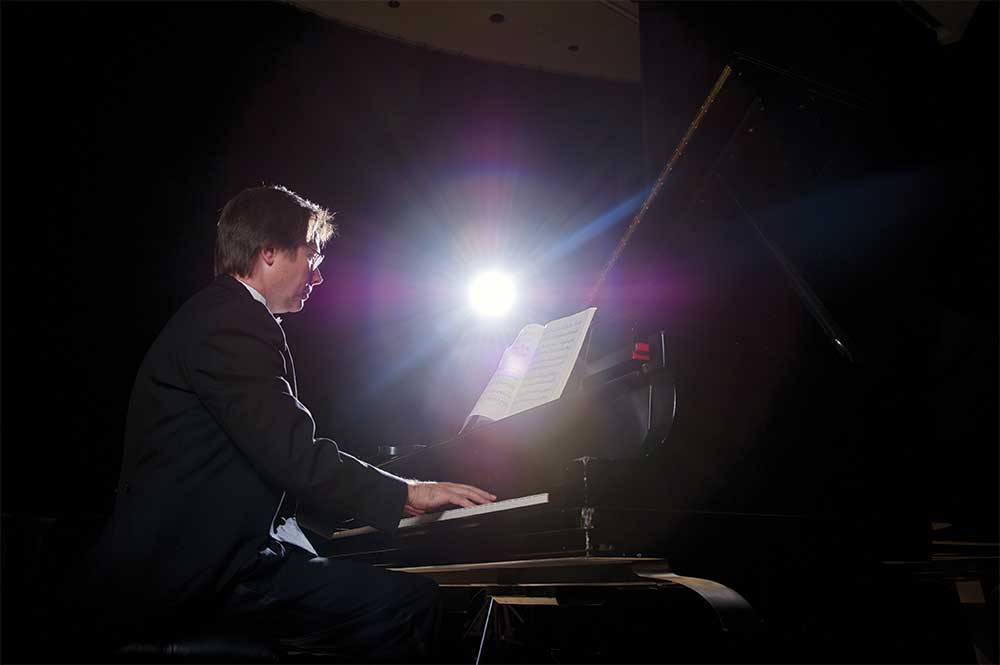
BY KELLY BARTLING
Nathan Buckner’s repertoire list numbers 400. That’s the number of pieces he’s mastered for piano solos, piano duets, piano and strings and woodwinds, orchestra and contemporary music.
His number of professional concert appearances: 300. That’s a lot of practicing and performing for this child-violinist-turned-pianist who has become one of Kearney and Nebraska’s premier musicians in series and solo performances such as Concerts on the Platte, piano concertos and chamber performances – and a featured performer with the Hastings and Kearney symphony orchestras.
He’s performed throughout the world, notably at the Blue Lake Summer Arts Festival, Delmarva Piano Festival, for the College Music Society International in Seoul, and at recitals in Hong Kong and Weihai, in Ljubljana, Slovenia, Mexico, Taiwan and Belarus.
When Buckner plays his audience is transported to a world apart from today. Maybe to the Baroque era. To a Romantic age. Or to a time of old aristocracy in Russia.
His piano is played in concerto as a solo instrument where he can bare his soul amid the notes and crescendos as designed and written by masters of all the world’s best piano concerto literature. Or it’s part of a string or piano trio of piano-cello-violin, piano-violin-horn, or piano-violin-viola. Or of a chamber quartet: piano, two violins, cello.
When he’s not in concerto, most often his playing companion is his wife Ting-Lan Chen, or with Noah Rogoff as part of the UNK Faculty Piano Trio.
In July, he and Chen performed for the 42nd Abbey Bach Festival in Mount Angel, Ore.
His return to the Oregon festival makes him nostalgic and reflective. For family and for his musical roots.
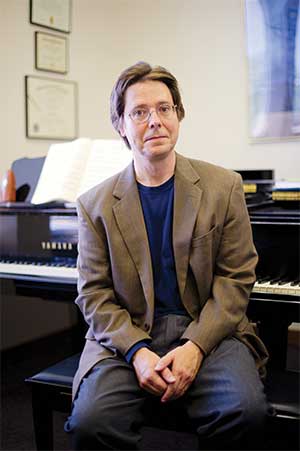
TO THE JUILLIARD
Buckner was 17 when he left Eugene, Ore., and moved to the Bronx, N.Y., to attend the Juilliard School preparatory program – a child-turned-teen prodigy of piano, who before fate intervened, began his world in music as a violinist.
His father Paul Buckner still lives in Eugene – a noted sculptor, scholar and creative pioneer in figure studies – and is turning 80. His mother Kay Lamoreux Buckner (1936-2012) was also a formative influence in his creative endeavors, and passed away last December. Buckner is cataloguing her letters, discovering new things about her as an adult son of a famous artist.
Family and fate and love of art and music are themes that dominate a discussion with Nathan Buckner.
“My father was responsible for the figure studies program at the University of Oregon, with classical traditions of figurative artwork – the human form,” Buckner said. “He taught the anatomy classes and figures studies classes. Which was not popular in the 1960s when he started, when everything was not abstract or expressionist ‘enough.’ My parents during their early careers experienced quite a bit of derision for that.”
Before Buckner was born, his father earned a Fulbright to study at the Slade School of Fine Art in London. Nathan and the family went with him for his regular sabbatical trip when Nathan was four, exploring for a year, “being dragged from gallery to gallery” in places like the Victoria and Albert Museum, through Florence and Madrid. Even at such a young age, he remembers.
“I’m from a family of sculptors and painters basically. I went into a different field, music, to avoid the competition. I can’t draw like they can. My family is quite an interesting group.” Dad and brother are noted sculptors, mother a noted painter, an uncle who taught ballet, a cousin architect.
“I’m a musician, my wife is a musician, both of us are performing musicians.”
At age 11 Buckner studied violin, playing for six years.
“I stopped when I was 16. …Why? It’s hard to say. There are a number of things that happened. Some of these tend to be fate,” he said. “That’s what my wife would say – when she grew up in a such a system that she was in, piano was her first instrument – and at some point she was pointed to violin. And she got a great teacher and she was pushed on the violin and then became a violinist.
“In my case, when I was 14, I suddenly stumbled into a situation with a very fine piano teacher who made it very inspiring for me to pursue piano and then at that point it was almost all piano.”
Shoshana Cohen, herself a student of Juilliard in the 1960s, happened to be in Eugene, Ore., and was a fascinating and inspiring influence to Buckner. He describes her as flamboyant.
Fate brought him Cohen, and he became highly skilled and motivated. Enough to travel across a continent to a city of 8 million people that may as well have been a different planet, as much unlike it was to Eugene.
Philip Antony Corri?
Buckner earned his bachelor of music at the Juilliard School, later his master of music in piano performance at Indiana University, then his doctor of musical arts in piano performance and literature at University of Maryland. He came to UNK upon completion of his Ph.D. and has been here ever since, rising from assistant professor to associate, awarded tenure in 2003 and full professor in 2009.
Buckner’s trip to England as a 4-year-old, in addition to developing some childhood memories and bridging his legacy backward to his earlier ancestors, provided some inspiration for his dissertation and scholarly research topic: composer Philip Antony Corri.
Corri is someone you’ve probably never heard of. Buckner finds him fascinating, after spending hundreds of hours studying him, reading his music, performing it.
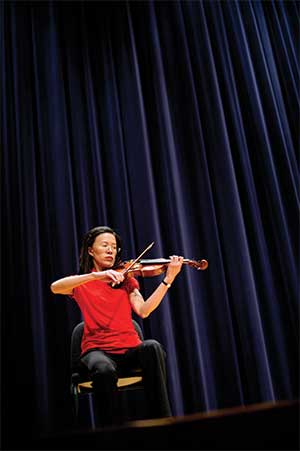
COLONIAL AMERICA AND ITS PLACE IN MUSIC HISTORY INSPIRED HIM AS WELL
“Initially I was exploring a lot of what was going on in music in colonial America and classical period… often referred to as the federal period in this country. It being a historically neglected subject, it interested me in what was going on,” he said. He found a connection to Corri’s story as a composer and pedagogy.
“My mother’s family were Huguenots who in the 1680s-1700s came to America, so I had maybe more of an interest in colonial periods of time, than in many families,” he said. “Not that any of my ancestors were musicians, but I’m very interested to know what the climate was, especially in the cities and in the countryside as well. That (subject) fit the bill in many ways.”
Now his creative exploration centers around chamber music, exploring classical literature: Bach, Beethoven, Brahms, Chopin, Haydn, Liszt, Schubert, Mozart, Ravel, Rachmaninoff, Grieg, Mendelssohn. He also enjoys some modern and contemporary works such as Gershwin’s “Rhapsody in Blue,” Darleen Cowles Mitchell’s “Illuminata,” “Juilus,” “Passages,” and “Variants,” among others; Frederick Fennell’s works.
As any musician would, he enjoys playing solo as much as playing with his musician-colleagues: Piano four-hands is one of his favorite collaborations. Playing with Chen and Rogoff as the faculty trio – really anything with chamber music for piano and stringed music combinations.
“It’s not possible to talk about my work without talking about my wife’s work, too. She is first and foremost the person I collaborate most with as a musician,” he said. ‘‘Even today, we have at this point performed together almost all of the standard literature for the violin and piano combination. This is something that does interest me very much at this point.”
Ensembles bring opportunities to negotiate and navigate through collaboration, he said.
“If you want to do collaborative work involving a chamber ensemble, then you can be more selective with the musicians you’re working with. If it’s an important piece of chamber music to you you’re not going to have too many opportunities to play the same piece, when it comes to solo piano literature you can do that any time because that involves only you.”
How does a musician with such a depth of experience and variety of collaborations decide what to attempt and master next? He laughs.
“This is very funny because we’ve had many conversations about that, that in part go ‘what haven’t we done?’ We (he means he and Chen) are so both of this sort of mentality that we’re sort of hungry to find out what else is there. And that’s maybe why we’re so good together. There’s that element of it.”
Most often the selection of work follows the requirement for the type of performance or festival. For instance the July recital in Oregon.
“We actually had a very interesting process for determining which of the 10 Beethoven sonatas we were going to do: We took a vote. We (he and Chen) each ranked 10 sonatas 1-10 in the order in which we thought we would like to do them and which we thought would be suitable and then we averaged the 2 numbers to come up with the piece that would surface to the top, and so we’re doing the 8th Sonata, the G major. I think she ranked that slightly higher than I did but on average it was the highest one. But none of the Beethovens leave anything to be complained about really!”
But mostly, those conversations are about what they enjoy, and sometimes the two are just drawn to the same pieces of music – “and then other times we then have to negotiate a little bit in that process.”
“The more musicians you add to the equation the more complicated it becomes.”
Kearney is a rich oasis for anyone who is pleased to hear beautiful music, experience beautiful art, and who revels in creative expression. If it’s due in any part to him, he refuses credit. The faculty in the school of music, are, however, stage-setters for music in central Nebraska.
Whether there has been an increasing interest and audience for chamber music – a revival of sorts – is difficult to tell.
“The music faculty here set the tone. But I tend to think that in general there has been more of a direction, that you can trace through progress of the 20th century, and more of an interest specifically in chamber music. I have seen in my time there has been more interest and there have been many more chamber concerts performed in places like Kearney, and more of a migration to an interest in the great works for chamber ensembles.”
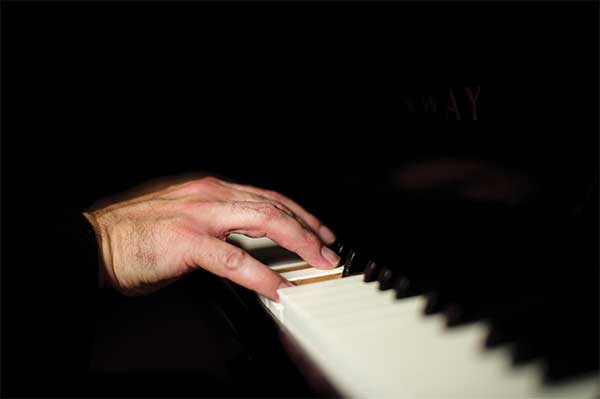 He remembers several stand-out performances in Kearney as highlights.
He remembers several stand-out performances in Kearney as highlights.
“One in particular, a performance of my wife and I… a Brahms horn trio, with piano, violin and horn, in March of 2007 that was particularly well-received. We’ve performed together all kinds of chamber work, all 10 of the Beethoven sonatas for piano and violin, all of the Brahms, most all of the important works in piano and violin we’ve done.”
“I think, and Ting-Lan would second this, that the favorite performance that I’ve given here was probably the performance in April of 2006 when we performed the Brahms A Major piano quartet. I suspect very few people were familiar with it but it is one of those monumental chamber works: piano, violin, viola, cello combination. Brahms wrote three and this is the second. But the A Major piano quartet is one of those monumental pieces. It requires more than 50 minutes to perform and it’s one of those pieces that one can die happy after one has performed…and, which I think at the performance, it did go very well.
“That, for me, is one of the moments I remember most fondly.”
Buckner traveled to China in 2008 for a unique experience teaching at Shandong University at Weihei, China, where he again realized that music is indeed a universal language. During a five-week teaching and performance schedule, he taught accompanying and improvisational accompanying, a master class in Schubert’s sonatas, and numerous private lessons.
He doesn’t speak Chinese. His 3-year-old son will, he said. (“It’s too late for me.”)
“I had a translator there but he didn’t say a lot,” Buckner said. “Usually you can teach things on piano through demonstration. That’s the best way to teach. You demonstrate. You can explain what it is you’re doing.
Buckner references the famous quote, “Writing about music is like dancing about architecture.”
“On some level or another there’s that truth. It’s better to just demonstrate. But you can’t demonstrate everything and you do have to do some explaining. And I could. I had enough Chinese vocabulary to get through some things myself but then I would get stuck, and so the translator would start speaking.”
Writing about Nathan Buckner’s music is indeed like trying to dance about architecture.
-30-
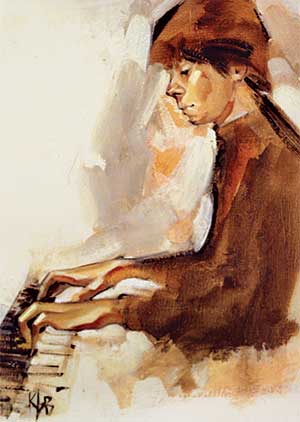 SIDEBAR – Who is Philip Antony Corri? Or is he Arthur Clifton?
SIDEBAR – Who is Philip Antony Corri? Or is he Arthur Clifton?
The subject of Nathan Buckner’s dissertation, composer Corri also is known as Arthur Clifton – his second name. A fascinating fellow. Born in Edinburgh, Scotland, in 1784, Philip Antony Corri later worked in London and then headed overseas to America in the 1820s when he transformed into Arthur Clifton, settling in Baltimore, working as a church organist and music teacher.
Why two names?
Scottish by birth and Italian by heritage, English by his education, Buckner said, it appears the original Philip Corri escaped Europe to escape a marriage.
“He was a bigamist.” As was not uncommon the case during the 19th century, when men emigrated to America it was for political reasons or escaping an element from his past, Buckner said. “His first wife was a pretty unsavory character in many ways. He came to America and was baptized under a new name of Arthur Clifton then married his second wife the next day,” Buckner said. So although there is no direct evidence implicating him in taking a second wife while still married to a first, it’s presumed. He had a second family.
Corri also “happened to be a very good composer and was an important pedagogue in both England and America,” Buckner said. Buckner wrote his dissertation on Corri/Clifton and performed a piano concerto of his composition, which was Corri’s Nebraska/Midwest premiere.
The piece Buckner performed was published originally in 1812 and premiered in New York by the composer himself in the 1820s. The edition performed in Nebraska was one prepared by Buckner.
Was it well-received in Nebraska? Yes, Buckner said.
But enough about Corri. Even though Buckner said he’s one of few, if any others, who’ve become experts on the composer. Researching Corri is really not interesting him anymore. “(Corri’s) a part of me. But I’m a pianist who wrote a dissertation not a writer who’s a pianist.”
Corri, also a writer on music pedagogy, died in 1832; his most important work being an opera, “The Enterprise.”
-30-